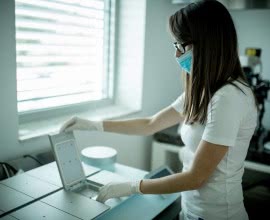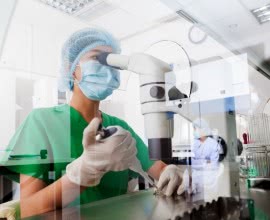Under the EmbryoScope – What Is It?
The EmbryoScope is an artificially designed incubator that mimics the necessary conditions needed for a living embryo to survive and thrive in an IVF laboratory.[1] It is also an innovative time-lapse photography system that takes a photo of the embryo every five to ten minutes and compiles them together into time lapse movies.[2]
One big advantage of the time-lapse photography system is that is allows embryologists – professionals whose job is to retrieve eggs, assist with in-vitro fertilization, maintaining clinical records and running tests on eggs[3] - to closely monitor the embryo in their stable environment and choose the embryo(s) with the best and highest chance of giving the patient a successful pregnancy and healthy baby.[4]
A second advantage is that the EmbryoScope is also a learning algorithm, which searches for constantly for the patterns in data produced from monitoring the embryo.[5] This suggests that the embryologist assigned to monitor the embryo can predict chromosomal abnormalities, studies of which have shown that chromosomally normal and abnormal embryos behave differently during their cell division times.[6]
A third advantage of the EmbryoScope is that because it impersonates so well, the conditions inside the human body an embryo needs to survive, embryologists can safely monitor and check the embryo(s) without taking them out and risk exposing them to stress and other possible external factors.[7]

So who is eligible for the EmbryoScope? Theoretically, all patients undergoing IVF treatments have the potential to utilize this technology but it works the best for patients who generate more embryos as the EmbryoScope also works as an embryo-selection tool.[8] The more embryos a patient produces, the wider the net for selection, which can help to boost chances of a successful pregnancy and healthy baby.
In conclusion, The EmbryoScope is a cutting-edge piece of modern technology that has proven advantageous for both patient and doctor. For the patient, it the EmbryoScope potentially helps improve successful pregnancy rates by carefully and closely monitoring the growing embryos and assisting the embryologists in selecting the best embryos to be transferred to the patient. The EmbryoScope also helps embryologists to predict any chromosomal abnormalities, which can minimize the risk of producing an unhealthy baby.
For doctors and fertility specialists, the EmbryoScope is a learning algorithm that produces data regarding the growth and development of the embryo, which can be useful for the future of fertility medicine. These doctors can monitor the development and growth of the embryos in a stable environment without subjecting it to stress or external factors, which means they can record and produce uncontaminated data.
Sources:
[1][1] ‘Embryoscope: The Technology Behind IVF’, in ivi.uk, published October 18th, 2017, viewed on March 31st, 2019, https://www.ivi.uk/blog/ivi-embryoscope/
[2] SCRC Contributor, ‘What to Do Before and After Embryo Transfer: Tips for Embryo Implantation’ in South California Reproductive Center (SCRC), published January 17th, 2017, viewed on March 31st, 2019, https://blog.scrcivf.com/embryo-transfer-tips-for-before-and-after-the-procedure
[3] ‘Embryologist: Job Description and Career Requirements’, in study.com, viewed on March 31st, 2019, https://study.com/articles/Embryologist_Job_Description_and_Requirements_for_a_Career_as_a_Embryologist.html
[5] SCRC Contributor, ‘New IVF Technology: What is the EmbryoScope?’, in Southern California Reproductive Center (SCRC), published January 24th, 2019, viewed on March 31st, 2019, https://blog.scrcivf.com/new-ivf-technology-what-is-the-embryoscope
[6] ‘Embryoscope – Time Lapse Imaging – Advantages of Embryoscope’, in Create Fertility – Pioneers of Natural and Mild IVF’, viewed on March 31st, 2019, https://www.createfertility.co.uk/techniques/embryoscope-time-lapse-imaging














